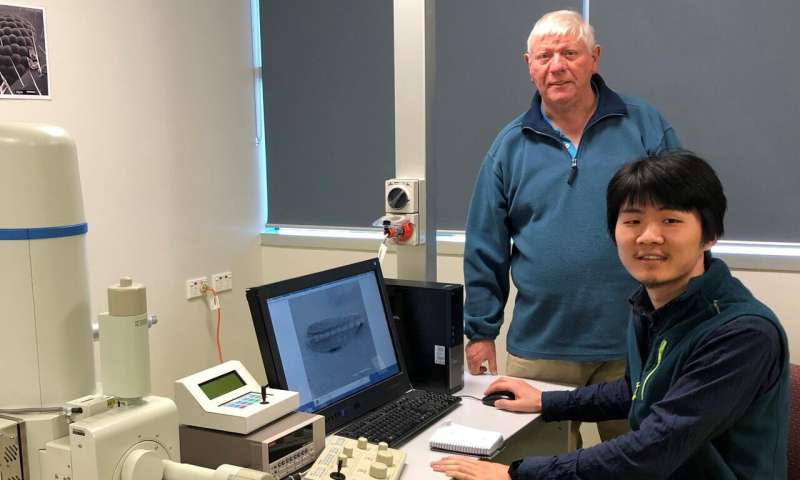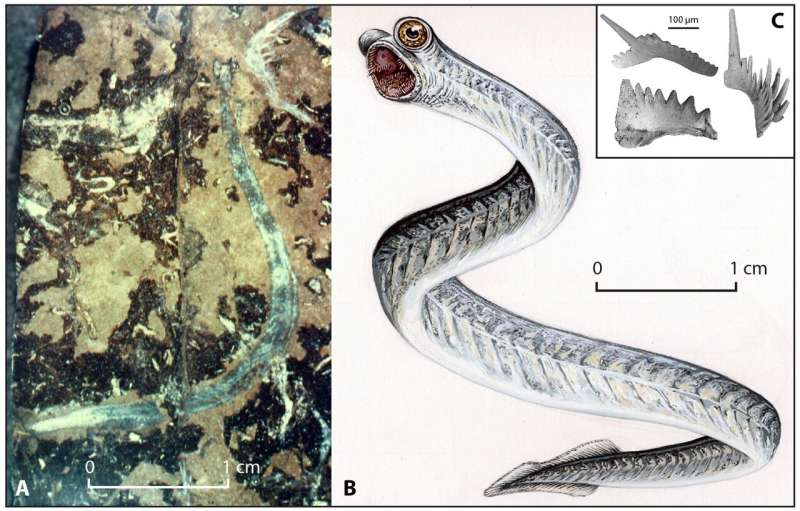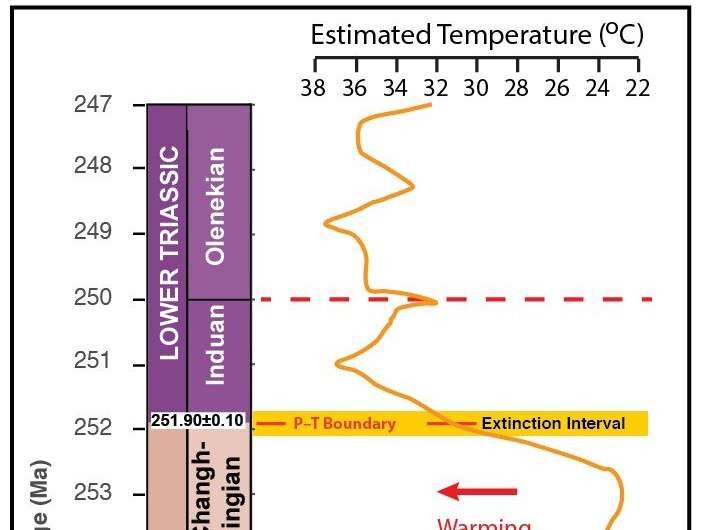Study of microfossils maps extreme global warming and environmental change

Studies of marine microfossils, known as conodonts, have allowed a team of researchers from Australia and China to map extreme global warming which coincided with the most severe mass extinction on Earth approximately 252 million years ago at the end of the Permian period.
The team comprising Professor Ian Metcalfe, from the UNE Palaeoscience Research Centre, Dr. Luke Milan and Dr. Tim Chapman of UNE Earth Sciences, and Mr Kui Wu, a visiting Ph.D. Research Student from China University of Geosciences, Wuhan are part of an ongoing, broader multi-disciplinary research effort focusing on the Permian-Triassic transition in Australia and China.
"Conodont microfossils are the only known hard parts of an extinct ancient group of marine primitive fish-like vertebrates that swam in the Earth's oceans from the Late Cambrian to the end of the Triassic about 500 to 200 million years ago. They are possibly distantly related to the living hagfish, and perhaps an ancient ancestor of more modern vertebrates including humans." Prof. Metcalfe said.
"The hard elements of conodonts are found abundantly in marine sedimentary rocks which makes it one of the best fossil groups to help us precisely date Palaeozoic and Triassic marine sedimentary sequences. These elements are used to estimate temperatures to which the rocks have been heated. This helps us to determine the thermal maturation levels of sedimentary rocks which is important in the hydrocarbon exploration industry."

By researching size variations in conodont populations, the team were able to successfully map geologically rapid changes in global temperatures which continued in the aftermath of the mass extinction in the early Triassic.
Their research findings further revealed that dangerous variations in global sea-surface temperatures continued for the subsequent five million years in the Early Triassic period.
"Ancient sea-surface temperatures, at the end-Permian mass extinction level and Permian-Triassic boundary, where lethally hot and in excess of 37oC," Prof. Metcalfe said.

Their results will be presented in a forthcoming paper in the Journal of the Geological Society of London entitled "Recurrent biotic rebounds during the Early Triassic: biostratigraphy and temporal size variation of conodonts from the Nanpanjiang Basin, South China"
More information: Kui Wu et al. Recurrent biotic rebounds during the Early Triassic: biostratigraphy and temporal size variation of conodonts from the Nanpanjiang Basin, South China, Journal of the Geological Society (2019). DOI: 10.1144/jgs2019-065
Journal information: Journal of the Geological Society
Provided by University of New England





















